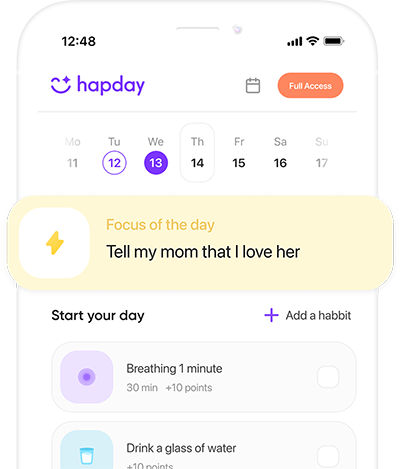Table of Contents
- Understanding the Beast: Childhood Trauma
- The Ripples of Childhood Trauma
- Venturing into Healing Terrain Without Therapy
- Charting Your Unique Healing Journey
- Wrapping It Up
It’s no secret that childhood trauma is an experience that leaves a mark—a deeply transformative one that echoes throughout an individual’s lifetime, shaping everything from emotional well-being to the way one builds relationships. Sure, many people gravitate towards therapy as a classic approach to navigate these turbulent waters, but it’s definitely not the sole avenue. Gaining insight into childhood trauma and delving into healing methods beyond therapy holds paramount importance for those keen on self-betterment, and heck, just living a more empowered life.
Understanding the Beast: Childhood Trauma
So, what exactly is childhood trauma, you ask? Well, it’s essentially those haunting experiences we endure during our younger years—an unwelcome mix, perhaps, of emotional abuse, neglect, or even watching violence unfold before our very eyes. The ACE Study (Adverse Childhood Experiences)—yeah, the one by the CDC and Kaiser Permanente back in the late ’90s—revealed that about 61% of folks report facing at least one type of childhood trauma. And for 16%? Let’s just say they had it four times worse… Those early blows can lead to all sorts of hurdles, like emotional chaos, chronic stress, and even amp up the odds of mental health woes down the line.
The Ripples of Childhood Trauma
The scars from childhood trauma? They run deep—deeper than many might think. If the insights from the National Institute of Mental Health are anything to go by, trauma can mess with brain development and throw the regular growth process out of whack. Memory, attention, emotional regulation—everything takes a hit. Look, studies have linked childhood trauma to skyrocketing incidences of depression, anxiety, PTSD, the whole lot, as one grows older. Acknowledging these impacts is vital—because it gives weight to the experience and underscores why finding paths to healing is so crucial, whether within the therapy framework or exploring beyond it.
Venturing into Healing Terrain Without Therapy
Don’t get me wrong—therapy is potent. But let’s face it, it’s not always within arm’s reach for everyone. Luckily, you’re not out of options. Here’s a bunch of self-help routes, underpinned by scientific wisdom, for anyone willing to explore healing avenues:
- Tapping into Mindfulness and Meditation
This duo of mindfulness and meditation isn’t just wellness buzzwords—they’ve got grit, backed by research. A bit of meditation can really calm those frazzled nerves. The journal Psychological Trauma: Theory, Research, Practice, and Policy found that mindfulness-based stress reduction (MBSR for the win) has the chops to ease PTSD symptoms. Think about it: being in the moment, without judgments, frees one from the shackles of traumatic memories—sounds liberating, doesn’t it?
- Exercise: More Than Just a Sweat Sesh
Exercise—it’s not just about chiseling that body; it’s also about releasing endorphins, those delightful natural mood-lifters. A paper in Trauma, Violence, & Abuse showed that consistent physical activity works wonders in slicing down PTSD symptoms and boosting mood. What’s not to love about breaking a sweat while clearing up the mental cobwebs?
- Creative Expression: Letting the Heart Speak
There’s something magical about channeling emotions through art, be it sketching, playing the guitar, or weaving words together. The American Journal of Public Health points out that creative arts therapies pave the way for healing, offering a voice to emotions that words might struggle to articulate. Ever tried painting out your sorrows? It’s like speaking a language of its own.
- Building a Support Network: We’re Better Together
Let’s not underestimate the power of community—being wrapped in the warmth of a caring circle can work miracles for anyone grappling with childhood trauma. It’s in those empathetic nods of understanding where true healing begins. Whether you’re finding solidarity in support groups or just leaning on friends, the sense of fellowship can be a lifeline.
- Journaling: A Pen and Paper Odyssey
Oh, how freeing it can be to spill your thoughts onto paper. Expressive writing, as suggested by The Journal of Traumatic Stress, can go a long way in easing distress linked to trauma. Journaling gives you a personal venue to untangle thoughts and emotions at your own rhythm—sort of like having a conversation with yourself, without the awkward pauses.
- Food and Sleep: More Than Just Basic Needs
Don’t snub the importance of a proper diet and hitting the hay. Eating right can lift your spirits and fight off sluggishness, while decent sleep does wonders for keeping your mind sharp and emotions in check. The Journal of Clinical Sleep Medicine rightly notes that sleep disturbances often shadow trauma survivors—a gentle reminder of the need for some good old sleep hygiene.
Charting Your Unique Healing Journey
Everyone’s healing journey is uniquely their own, and it’s important to explore what resonates with you most. Whether it’s mindfulness, art, or building up your social network, taking those steps towards healing is what counts. Nevertheless, it goes without saying that severe symptoms might need the guiding hand of a professional—but these self-help tactics can either complement formal treatment or stand on their own for those who can’t pursue therapy.
Wrapping It Up
Discovering ways to mend the wounds of childhood trauma sans therapy isn’t just a pipedream; it’s downright empowering. Lean into mindfulness, get moving, unfurl your creative sails, seek out your tribe, journal with abandon, and nourish your body and soul—it’s all part of fostering resilience. Healing is indeed a journey, filled with an array of small steps that gradually usher in significant changes. Curious about more avenues for guidance or just want to connect with a community? Check out Hapday—your next stop in this ongoing journey.
References:
- Felitti VJ, Anda RF, Nordenberg D, et al. (1998). “Relationship of Childhood Abuse and Household Dysfunction to Many of the Leading Causes of Death in Adults: The Adverse Childhood Experiences (ACE) Study.” American Journal of Preventive Medicine.
- Berceli, D., & Napoli, M. (2006). “A Proposal for Studying the Neurobiological Effects of Trauma-Induced Stress on Mindfulness Practices with the Therapist as Subject.” Traumatology.
- Penedo, FJ., & Dahn, JR. (2005). “Exercise and Well-Being: A Review of Mental and Physical Health Benefits Associated with Physical Activity.” Current Opinion in Psychiatry.
- Stuckey, HL., & Nobel, J. (2010). “The Connection Between Art, Healing, and Public Health: A Review of Current Literature.” American Journal of Public Health.
- Pennebaker, JW., & Beall, SK. (1986). “Confronting a Traumatic Event: Toward an Understanding of Inhibition and Disease.” Journal of Abnormal Psychology.

